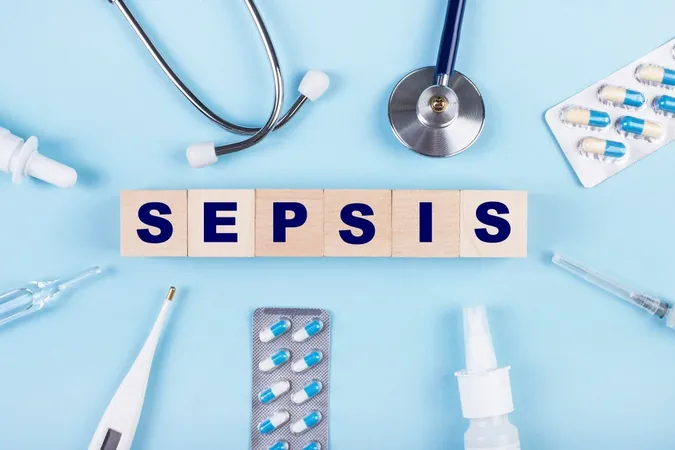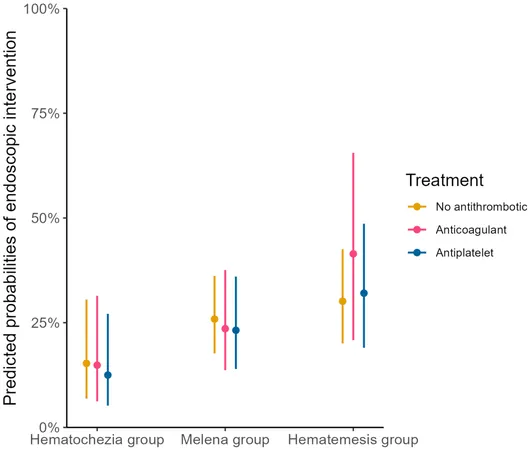
Urgent Call to Action on World Sepsis Day 2025: Your Life Could Depend on It!
2025-09-12
Author: Mei
Why Sepsis Needs Your Attention Now!
On September 13, the world marks World Sepsis Day, an annual event dedicated to raising awareness of this silent killer that claims countless lives each year. The groundbreaking theme this year aims to enhance public knowledge and engage the media, spotlighting critical messages about the staggering global impact of sepsis and the pressing need for robust policy changes to combat this healthcare crisis.
A Game-Changing Agenda: The 2030 Global Vision for Sepsis
As we observe World Sepsis Day 2025, we also celebrate a pivotal milestone—the one-year anniversary of the 2030 Global Agenda for Sepsis. Launched by the Global Sepsis Alliance, this ambitious strategy seeks to cut the global incidence of sepsis by 25% and boost survival rates by over 20% by 2030. Yet, despite this significant initiative, sepsis continues to languish as an underprioritized healthcare issue. Significant political commitment and financial investments are critical to meeting these urgent targets.
What Is Sepsis? The Hidden Threat in Your Body!
Sepsis occurs when the body’s immune system overreacts to an infection, causing widespread inflammation and potentially leading to organ dysfunction and death. This life-threatening condition escalates rapidly, often resulting in septic shock—an emergency state requiring immediate medical intervention. Early recognition and treatment are crucial; otherwise, the consequences can be dire.
The Shocking Statistics: A Global Crisis!
Sepsis is one of the leading causes of mortality worldwide, with roughly 7.8 million diagnosed cases and 2 million related deaths reported in major markets in 2024 alone, translating to a shocking mortality rate of 26%. In patients suffering from septic shock, the situation is even graver, with mortality soaring to nearly 50%. These alarming figures underscore the urgent need for better awareness, faster diagnosis, and effective treatment methods.
The Challenge: Gaps in Knowledge and Treatment
Despite its severity, awareness of sepsis remains dismally low—even among healthcare professionals. Key symptoms, like fever and confusion, often lead to delays in diagnosis and treatment, contributing to high mortality rates. The updated Sepsis-3 guidelines emphasize the importance of assessing organ dysfunction to diagnose sepsis effectively, but experts agree that more improvements are necessary.
What's Next? The Future of Sepsis Treatment
Current treatment options for sepsis mainly involve broad-spectrum antimicrobials and supportive care, but these approaches have their limitations. There's an urgent demand for new therapeutics tailored to the unique pathophysiological needs of different patient groups. Fortunately, hope is on the horizon—there are 11 promising products in late-stage development that utilize innovative mechanisms of action. One standout is Adrenomed's monoclonal antibody, enibarcimab, which has shown potential in improving organ function and reducing mortality in septic shock patients.
Invest in Innovation: The Promise of New Treatments!
Historically, the road to effective sepsis treatments has been riddled with setbacks, deterring investment in this area. However, the current late-stage pipeline is brimming with promise. With continued dedication to research and development, the healthcare community can unlock innovative therapies that offer better outcomes for diverse patient populations. It's time we prioritize sepsis—lives depend on it.


 Brasil (PT)
Brasil (PT)
 Canada (EN)
Canada (EN)
 Chile (ES)
Chile (ES)
 Česko (CS)
Česko (CS)
 대한민국 (KO)
대한민국 (KO)
 España (ES)
España (ES)
 France (FR)
France (FR)
 Hong Kong (EN)
Hong Kong (EN)
 Italia (IT)
Italia (IT)
 日本 (JA)
日本 (JA)
 Magyarország (HU)
Magyarország (HU)
 Norge (NO)
Norge (NO)
 Polska (PL)
Polska (PL)
 Schweiz (DE)
Schweiz (DE)
 Singapore (EN)
Singapore (EN)
 Sverige (SV)
Sverige (SV)
 Suomi (FI)
Suomi (FI)
 Türkiye (TR)
Türkiye (TR)
 الإمارات العربية المتحدة (AR)
الإمارات العربية المتحدة (AR)